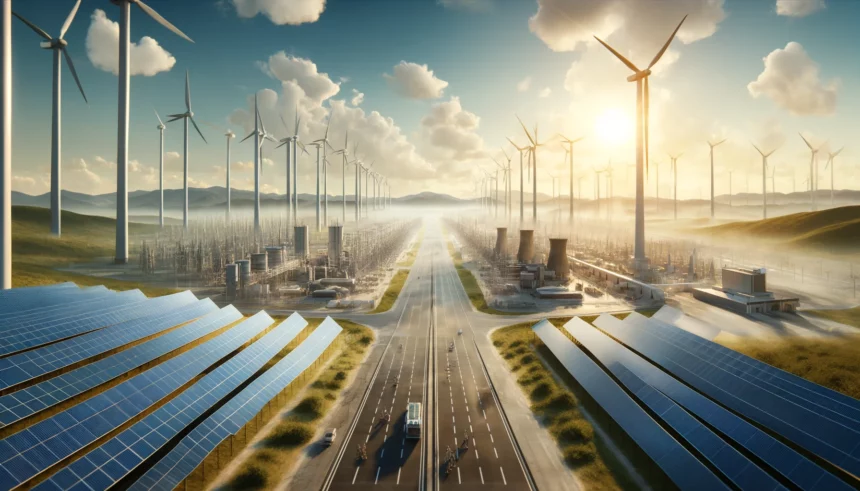In recent years, solar and wind power have taken the lead in new power plant construction worldwide. According to the International Solar Energy Society (ISES), these renewable sources made up 80% of global net power capacity additions in 2023. This impressive growth in capacity is now translating into significant increases in annual energy generation.
Rapid Growth of Solar and Wind Power
Over the last decade, solar power generation has surged ninefold, reaching 1,500 TWh per year. Wind power has also seen a notable rise, tripling to 2,300 TWh per year. This means that solar power has been growing at an impressive 22% per year, doubling every three years. If this pace continues, by 2042, solar energy could generate 100,000 TWh annually, enough to fully decarbonize the global economy.
Growth Rates in Power Generation (Annual Increase)
- Solar: 22%
- Wind: 11%
- Hydro, Nuclear, Coal: ~1%
- Gas: 3%
Future Projections
- Solar to surpass Nuclear: 2026
- Solar to surpass Wind: 2027
- Solar to surpass Hydro: 2028
- Solar to surpass Gas: 2030
- Solar to surpass Coal: 2032
Capacity Factors Across Different Energy Sources
- Nuclear: 74%
- Coal: 50-70%
- Combined Cycle Gas: 40-60%
- Wind: 30-60%
- Large Hydro: 30-50%
- Solar Photovoltaics: 12-25%
Despite solar power’s relatively low capacity factor, its rapid growth means it will soon outpace other forms of energy generation.
Leading Countries in Solar and Wind Generation
European countries, along with Australia, lead the world in per capita solar and wind generation. These countries have significantly higher per capita generation from renewables compared to the global average for hydro and nuclear.
Australia’s Renewable Energy Success
Australia is a standout example of how quickly change can happen with effective policies. Unlike Europe, which can share electricity across national boundaries, Australia must manage its energy needs independently. From 2020 to 2030, Australia’s fossil fuel generation is projected to drop from 75% to 18%, while solar and wind will rise from 19% to 75%.
Brazil and Chile: Pathfinders in Renewable Energy
Brazil and Chile are leading the way among middle-income countries, with 81% and 60% of their electricity coming from hydro, wind, and solar respectively. These countries are motivated by the need to cut both costs and emissions. Investment in storage, transmission, and demand management is ensuring that future grid stability is not a concern.
The Future of Energy
The dominance of solar and wind in new power plant construction signals a significant shift in the global energy landscape. As more countries follow the lead of early adopters like Australia, Brazil, and Chile, we can expect to see continued growth in these renewable sources, paving the way for a cleaner, more sustainable future.
With solar and wind energy quickly outpacing traditional sources, the future of energy looks brighter and greener. The transformation is already underway, and it’s only a matter of time before renewable energy becomes the new normal.
















